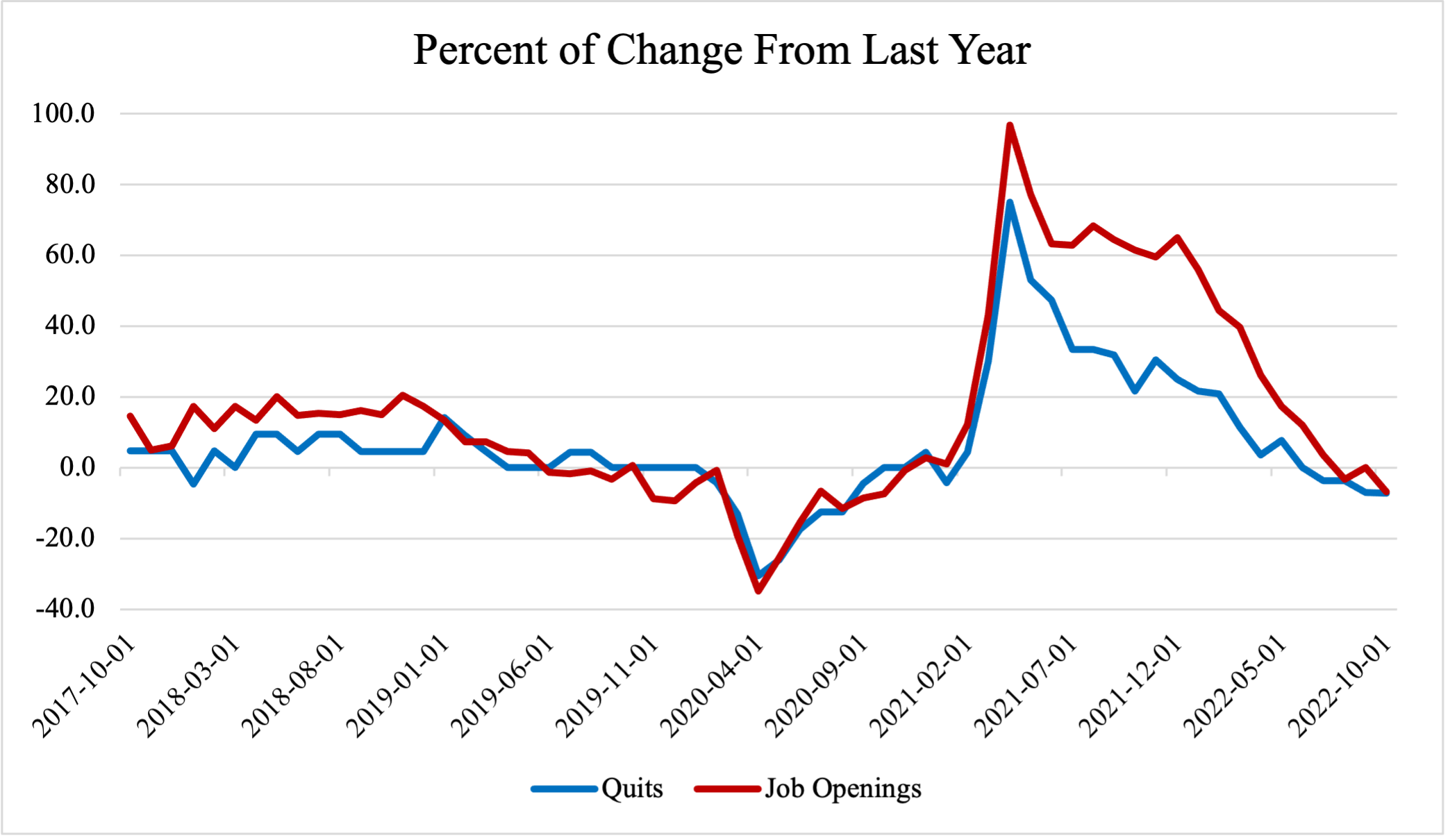The great resignation was good for workers while it lasted. The latest data from Job Openings and Labor Turnover Survey (JOLTS) from the Bureau of Labor Statistics reveals that quits have fallen over the last year after peaking during the pandemic. The number of job openings has also declined. This suggests a labor market that remains very tight, but has started to weaken. This poses and extra challenge for monetary policy. It is easy to keep increasing rates so long as unemployment is still low, but with still high inflation and softening job market, 2023 could mean stagflation and more political pressure to ease before inflation has returned to the 2% target. Meanwhile labor participation rates never fully recovered from the pandemic, especially for men. They also now face a weaker labor market and may be even less compelled to return to work.

Source: FRED
Allison Schrager is a senior fellow at the Manhattan Institute. Follow her on Twitter here.
Interested in real economic insights? Want to stay ahead of the competition? Every Wednesday, e21 delivers a short email that includes e21 exclusive commentary and the latest market news and updates from around the Web. Sign up for the e21 Weekly eBrief.
Photo by Baris-Ozer/iStock
